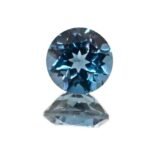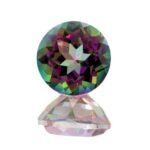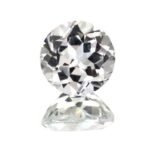Topaz: The Radiant Gem of November
Introduction
Topaz, celebrated as November’s birthstone, boasts a rich history, having been mentioned in biblical texts like the ‘Breastplate of Judgement’ of Aaron (Exodus: xxviii, 15-30). While a significant portion of topaz is colorless and subsequently treated to achieve a blue hue, naturally occurring topaz showcases shades like champagne, blue, pink, and the coveted imperial. Natural blue topaz without any treatment is a rarity, as is the pink variant. The imperial topaz, with its luxurious golden hue, stands out as the most desired, typically free from any enhancements.
Composition and Appearance
Topaz, scientifically represented as Al2SiO4(F,OH)2, is an aluminum fluorosilicate. Its diverse color palette arises from variations in the F and OH content. The “color centers” in topaz, when naturally radiated, produce its array of colors. However, these centers can sometimes be unstable, leading to rapid color fading, especially under sunlight exposure.
Origins
Brazil stands as the primary source of topaz. Other notable deposits are scattered across:
- Afghanistan
- Australia
- China
- Japan
- Madagascar
- Mexico
- Myanmar
- Namibia
- Nigeria
- Pakistan
- Russia
- Sri Lanka
- Ukraine
- United States
- Zimbabwe
For those seeking natural light blue topaz, regions in England (Cornwall), Northern Ireland, and Scotland are the places to explore.
Properties and Enhancements
With a commendable rating of 8 on the Mohs scale, topaz is a durable gemstone.
To achieve the desired blue hue in colorless or lightly tinted natural topaz, it undergoes irradiation followed by heating for stabilization. The deep “London Blue” shade results from neutron bombardment in a nuclear reactor, while the “Sky Blue” hue emerges from electron bombardment in a linear accelerator. Combining these treatments produces the vibrant Swiss or electric blue topaz shades. Post neutron bombardment, the gems often retain residual radioactivity, necessitating a waiting period of up to a year before they’re safe for wear. Pink topaz typically emerges from heat treatment of yellow stones. Additionally, topaz can undergo treatments to exhibit a “mystic” or rainbow sheen, achieved either through PVD (Physical Vapor Deposition) or a diffusion process.
Currently, there’s no lab-created version of topaz available in the market.




